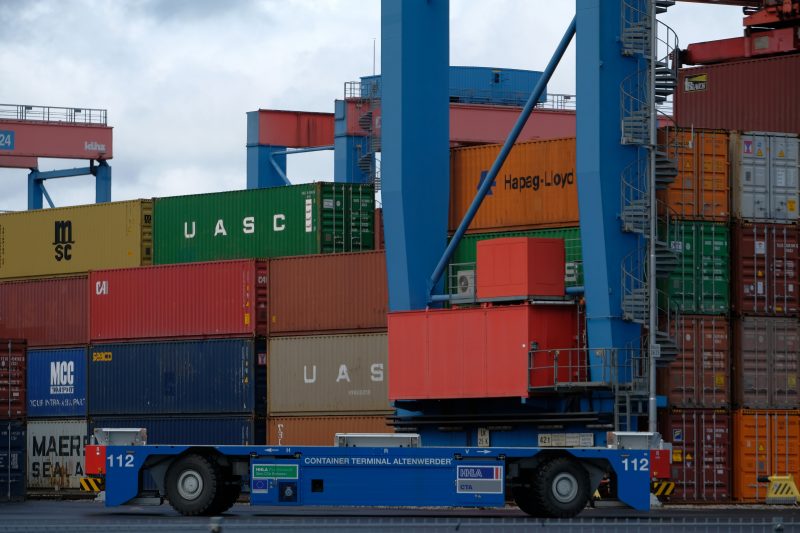Germany returns to growth but fears for industrial future
Germany, Europe’s economic powerhouse, returned to growth in the first quarter of 2019 (PATRIK STOLLARZ)
Berlin (AFP) – A strong first quarter for Germany has lifted some of the gloom from a weak second half to 2018, but fears linger for the future of its manufacturing-led model, analysts said Tuesday.
Europe’s powerhouse narrowly avoided recession late last year, with zero growth between October and December following a decline of 0.2 percent in the preceding quarter.
But the economy recovered again in the first three months of this year, with gross domestic product expanding by 0.4 percent on a quarter-on-quarter basis, data published by the federal statistics authority, Destatis, showed on Tuesday.
ING bank economist Carsten Brzeski said that “any panic about the state of the eurozone’s largest economy was overdone”.
LBBW bank analyst Jens-Oliver Niklasch agreed, suggesting that “the start gives hope that 2019 might not turn out as bad as the latest forecasts.”
The federal government in Berlin has repeatedly slashed its growth forecasts for 2019, most recently pencilling in full-year growth of 0.5 percent in April.
Many think-tanks and organisations like the International Monetary Fund (IMF) have also cut expectations, although they remain less cautious than the economy ministry.
– Domestic strength, foreign weakness –
Destatis, responsible for collecting the GDP data, said first-quarter growth matched a pattern seen over the past year.
Construction and consumer spending enabled by historically low unemployment remained the driving forces, while business invested in new equipment.
On the other hand, government spending fell back slightly and there were “mixed signals” from foreign trade, the statisticians said.
A global growth slowdown and trade tensions between the United States, China and the European Union have burdened German industry, much of which is oriented towards export markets.
On the positive side, a battery of one-off factors that braked the economy last year have faded, including tough new car emissions tests and low water on major rivers used for freight.
But other short-term effects could be responsible for buoying growth in early 2018 and be equally destined to wash out in the coming months, said Berenberg economist Florian Hense.
Unusually warm weather lifted construction, Easter holidays fell in the second rather than the first quarter, and tax changes that bit early in the year favoured higher household spending.
Looking ahead, “downside risks loom large” to any eurozone recovery over the remainder of the year, Hense said.
He pointed to a renewed escalation in US-China tensions and the failure of the EU and Britain to reach a divorce deal despite successive prolongations of Brexit talks.
“Even more so than for other economies, the trade talks between the US and China and the EU will determine the short- and medium-term outlook for Germany,” Hense predicted.
– ‘No complacency’ –
More broadly, “there is still no time or room for complacency” as “the economy still needs more investments, both from the public and private sectors,” especially in digital technology, training and infrastructure, ING’S Brzeski argued.
Ministers are currently battling over how much the state should intervene to pick economic winners, with economy minister Peter Altmaier offering up a government-led “industrial strategy” eyed suspiciously by finance minister Olaf Scholz and business groups.
With an ageing population, Germany fears “falling into the second division” among global economies, following the path of Japan in the 1990s, Der Spiegel magazine wrote this week.
Persistent scandals and upsets at industrial icons like Volkswagen, Bayer and Thyssenkrupp have contributed to the pessimistic mood.
And Germany has failed to bring forth any digital giant comparable with dominant Silicon Valley or Chinese firms.
Also dogging attempts to perk up the economy is the urgent need to do more to hit climate targets, after the country abandoned a goal to reduce greenhouse emissions by 40 percent by 2020 compared with 1990 levels.
Disclaimer: Validity of the above story is for 7 Days from original date of publishing. Source: AFP.


